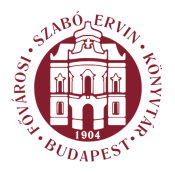Boros Géza: Statue Park - Our Budapest (Budapest, 2002)
The endless promenade dedicated to persons in the labour movement
15. Statue of Dimitrov (Valentin Starchev, 1983) The second statue of Dimitrov which stood in Dimitrov (today Fővám) tér was an upgraded replacement brought to Budapest as a gift from the Bulgarian government, or of the working people oh Sofia, as the inscription on the former brass plaque on the pedestal once proclaimed. "The true-to-life representation evokes the features of the great historical personality, but the self-confident bearing radiating firmness of character and the expressive dynamism of the outlines go far beyond the simple representation of the portrait” (Tibor Wehner). What charged the work with additional significance was the fact that in its background stood Gellert Hill with the liberation monument. The empty pedestal in Fővám tér is still in its place. l6. Monument of the Veterans of the Labour Movement (Aladár Farkas—Klára Herczeg—Zoltán Olcsai Kiss, 1967) This huge bronze relief featuring three people's commissars who served under the Council Republic in 1919 was inaugurated on 21 March 1967 in Kun Béla (today Ludovika) tér. In the middle is a full-size figure of Béla Kun (Zoltán Olcsai Kiss) flanked by Tibor Szamuely (Aladár Farkas) and Jenő Landler (Klára Herczeg). The symmetrical, rigid, two-dimensional representation evokes the spirit of an authoritarian system. According to an apt comment made by art historian Gyula Rózsa in 1993, the work was no more than "a state-sponsored and enlarged variant of petty-bourgeois funeral taste". The statues in the Labour Pantheon of the Kerepesi Cemetery were also sculpted by Zoltán Olcsai Kiss in 1958. 17. Statue of Lenin (anonymous Soviet artist, 1958) The first public statue of Lenin in Budapest was presented to the Budapest City Council by its Moscow counterpart on the occasion of a visit paid by First Secretary Khrushchev to Budapest and the bastion of heavy industry. Presented to the workers of the Csepel Works, the statue, "expressive of the love and admiration felt by the Soviet people", was unveiled on the 41st anniversary of the Great October Socialist Revolution. Made by an unknown artist, the piece is a typical representation of the leader pointing the way forward. According to Nóra Aradi, the figure of Lenin is used "always to symbolise the victorious revolution of the proletariat and of the new world order" as well as "to hint at the Marxist-Leninist party, pictorially representing Leninism itself and the relationship of the people to the trail blazed by Lenin". Aradi's description fits the case at hand particularly well, as the figure greet30
